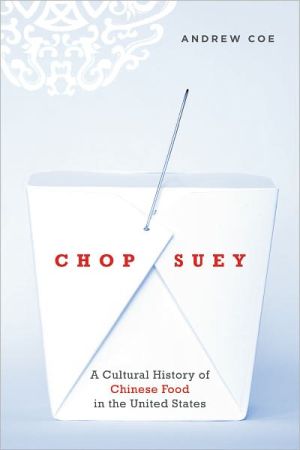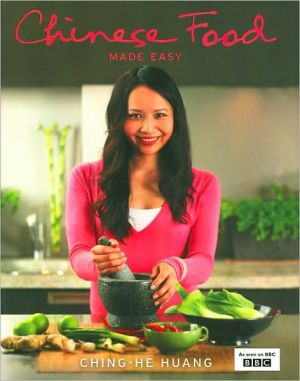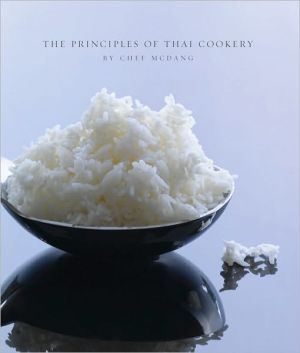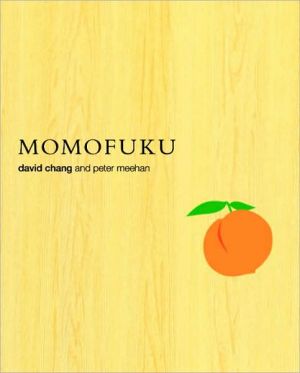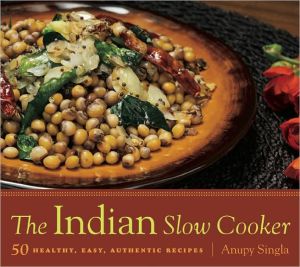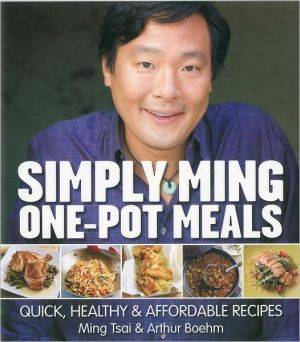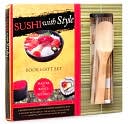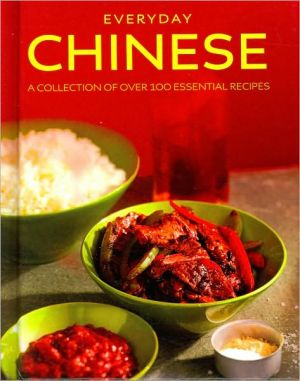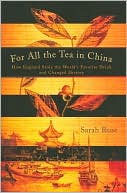Chop Suey: A Cultural History of Chinese Food in the United States
In 1784, passengers on the ship Empress of China became the first Americans to land in China, and the first to eat Chinese food. Today there are over 40,000 Chinese restaurants across the United States--by far the most plentiful among all our ethnic eateries. Now, in Chop Suey Andrew Coe provides the authoritative history of the American infatuation with Chinese food, telling its fascinating story for the first time.\ It's a tale that moves from curiosity to disgust and then desire. From...
Search in google:
In 1784, passengers on the ship Empress of China became the first Americans to land in China, and the first to eat Chinese food. Today there are over 40,000 Chinese restaurants across the United States—by far the most plentiful among all our ethnic eateries. Now, in Chop Suey Andrew Coe provides the authoritative history of the American infatuation with Chinese food, telling its fascinating story for the first time. It's a tale that moves from curiosity to disgust and then desire. From China, Coe's story travels to the American West, where Chinese immigrants drawn by the 1848 Gold Rush struggled against racism and culinary prejudice but still established restaurants and farms and imported an array of Asian ingredients. He traces the Chinese migration to the East Coast, highlighting that crucial moment when New York "Bohemians" discovered Chinese cuisine—and for better or worse, chop suey. Along the way, Coe shows how the peasant food of an obscure part of China came to dominate Chinese-American restaurants; unravels the truth of chop suey's origins; reveals why American Jews fell in love with egg rolls and chow mein; shows how President Nixon's 1972 trip to China opened our palates to a new range of cuisine; and explains why we still can't get dishes like those served in Beijing or Shanghai. The book also explores how American tastes have been shaped by our relationship with the outside world, and how we've relentlessly changed foreign foods to adapt to them our own deep-down conservative culinary preferences. Andrew Coe's Chop Suey: A Cultural History of Chinese Food in the United States is a fascinating tour of America's centuries-long appetite for Chinese food. Always illuminating, often exploding long-held culinary myths, this book opens a new window into defining what is American cuisine. Publishers Weekly According to food writer Coe, America's taste for Chinese tea goes back more than two centuries, and so does our confusion about the use of chopsticks. In this brief but ambitious volume, he chronicles the back-and-forth story of our relationship to the Middle Kingdom, its people and, above all, its food. Meals eaten by Americans in China in the early years of mercantilism and diplomacy (late 18th and early 19th century) were more European than Asian; the author dates the first record of an American eating indigenous Chinese food only to 1819. The gold rush and other expansionist projects brought thousands of Chinese to American soil along with their culture and their cuisine. Though xenophobia sometimes erupted as violent racism, public eating establishments in some cities began attracting the curious, and fads for such Westernized Chinese dishes as the eponymous stir-fry of the book's title swept urban populations. This short, dense history comes full circle with another American diplomatic mission: Nixon's historic 1972 banquet. Like its subject, the book is a little bit of a lot of different things at once-a solid and comprehensive sampling of a much larger topic. (July)Copyright © Reed Business Information, a division of Reed Elsevier Inc. All rights reserved.
1 Stags' pizzles and birds' nests 12 Putrified garlic on a much-used blanket 383 Coarse rice and water 644 Chinese gardens on Gold Mountain 1035 A toothsome stew 1446 American chop suey 1807 Devouring the duck 211Photo credits 253Notes 255Bibliography 265Index 279
\ Publishers WeeklyAccording to food writer Coe, America's taste for Chinese tea goes back more than two centuries, and so does our confusion about the use of chopsticks. In this brief but ambitious volume, he chronicles the back-and-forth story of our relationship to the Middle Kingdom, its people and, above all, its food. Meals eaten by Americans in China in the early years of mercantilism and diplomacy (late 18th and early 19th century) were more European than Asian; the author dates the first record of an American eating indigenous Chinese food only to 1819. The gold rush and other expansionist projects brought thousands of Chinese to American soil along with their culture and their cuisine. Though xenophobia sometimes erupted as violent racism, public eating establishments in some cities began attracting the curious, and fads for such Westernized Chinese dishes as the eponymous stir-fry of the book's title swept urban populations. This short, dense history comes full circle with another American diplomatic mission: Nixon's historic 1972 banquet. Like its subject, the book is a little bit of a lot of different things at once-a solid and comprehensive sampling of a much larger topic. (July)\ Copyright © Reed Business Information, a division of Reed Elsevier Inc. All rights reserved.\ \ \ \ \ Library JournalIn 1784, the first Americans to visit the Middle Kingdom encountered Cantonese food. It was not love at first sight—only after waves of 19th-century Chinese immigrants brought their daily fare to the new world did Americans come to appreciate the "hashes and fricassees" from a people rumored to eat dogs, cats, and rats. By the 1890s, New Yorkers had gone chop suey crazy, and the die was cast. VERDICT Fans of Jennifer 8 Lee's The Fortune Cookie Chronicles should appreciate this detailed, convoluted history of how Chinese food came to be seen as American as apple pie. Coe's account (he is a food journalist and coauthor of Foie Gras) lacks Lee's personal touch and could use a time line for dates and dynasties. But his research among U.S. sources is solid, and his chronicle interesting and informative, especially regarding Nixon's trip to China. Consider also British historian J.A.G. Roberts's China to Chinatown: Chinese Food in the West and Jen Lin-Liu's Serve the People: A Stir-Fried Journey Through China.—Martha Cornog, Philadelphia\ \ —Martha Cornog\ \
